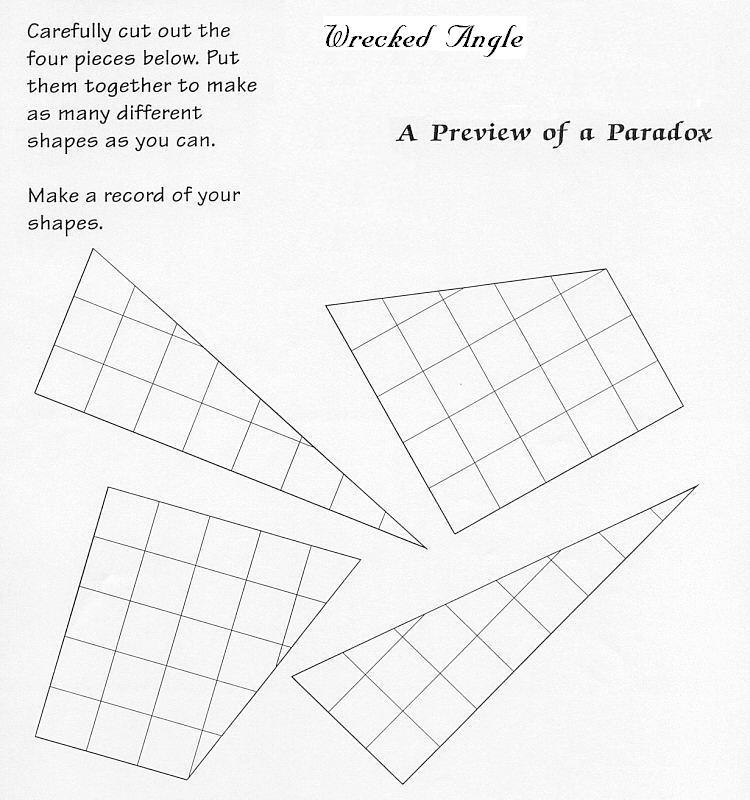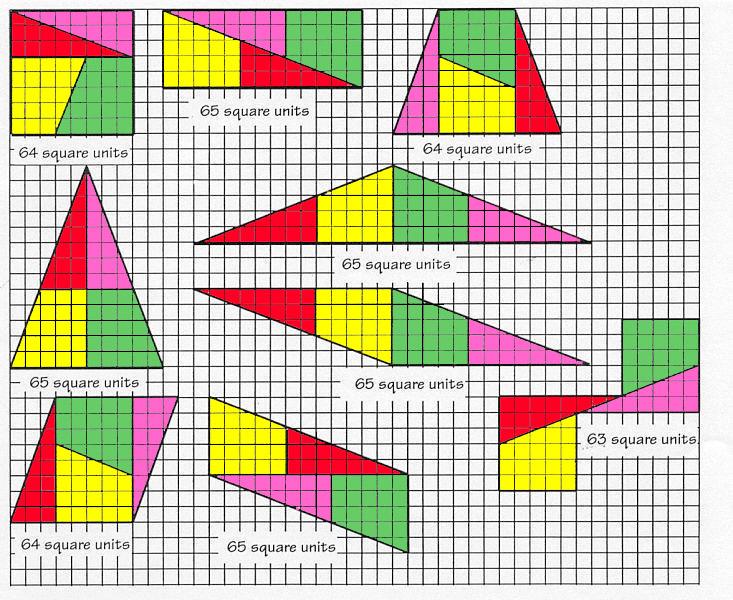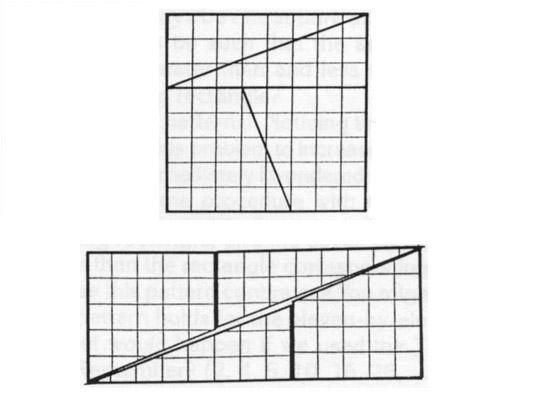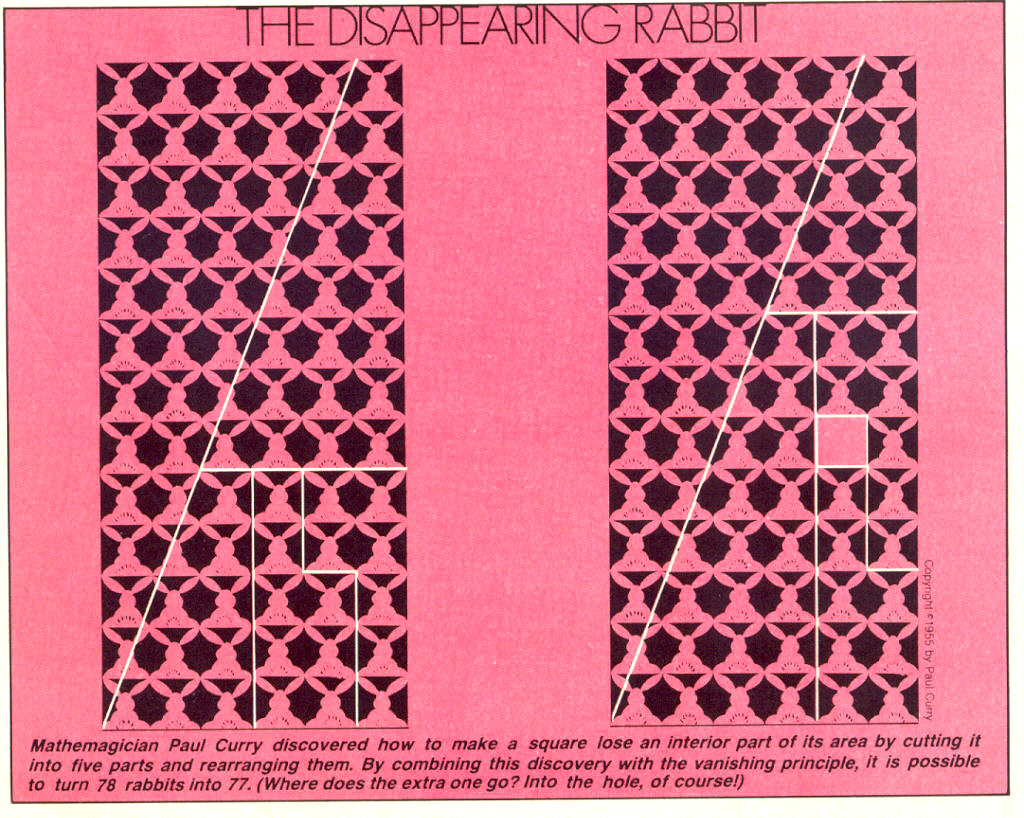
There appears to be a paradox! Some of the figures have 63
square units, some have 64 square units, and some have 65 square units.
|

How do you explain this impossible situation?
Take a closer look at the first two figures -- the square and the rectangle.
The four pieces fit snugly together for the square.
|

How can you prove this?If the pieces indeed did fit together to form a rectangle, then the diagonal would be one line segment. If it is just one segment, then it would have just one slope, since the slope of a line is always the same. Determine the slopes of the four pieces that form "the" diagonal (the slopes should be 2/5, 2/5, 3/8, and 3/8). Notice that they are not the same. Therefore, it is not one segment (which can be seen in the drawing above). |
Here is how one magician used this paradox for a magic trick:

Click here for a video of this trick